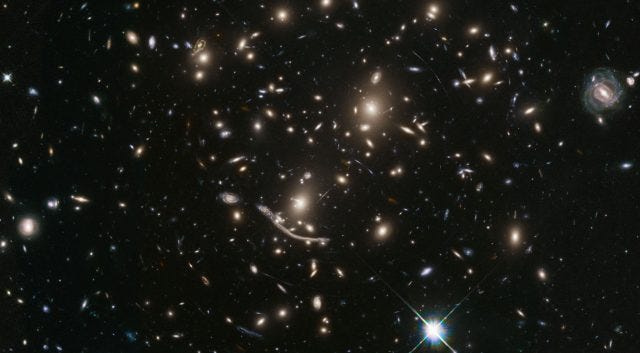The Formation of the Universe's First Stars: A New Perspective
Written on
Chapter 1: Understanding Cosmic Dawn
The universe is estimated to be around 13.8 billion years old. For much of that duration, it has resembled its current state, albeit on a smaller scale. However, there was an era devoid of starlight, enveloped in an endless darkness. Recent findings suggest that this changed during a period known as "cosmic dawn," which occurred approximately 200 to 300 million years following the Big Bang. A collaborative study from University College London and the University of Cambridge has provided insights into this transformative moment.
During the early universe, immediately after the Big Bang, conditions were so dense and uniform that radiation could not pass through, leading to what is referred to as the "dark ages." As the universe began to cool and expand, variations in density emerged. In these denser areas, gravitational forces began to gather hydrogen atoms, ultimately forming stars and illuminating the universe for the very first time. But when exactly did this phenomenon take place? To investigate, the research team utilized data from NASA's Hubble and Spitzer Space Telescopes.
Section 1.1: The Role of Distant Galaxies
The researchers focused on six of the farthest known galaxies. Because light travels at a consistent speed, observing these distant galaxies allows scientists to look back in time, revealing the universe as it appeared when it was only 550 million years old.

These distant galaxies are already populated with stars, indicating that a universe without stars would emit no detectable radiation. The initial stars, marking true cosmic dawn, were so faint that current telescopes cannot identify them. To trace back to this pivotal moment, the researchers employed spectroscopic analysis to search for atomic hydrogen in these galaxies. The presence of atomic hydrogen, which consists of whole hydrogen atoms, increases in stellar atmospheres over time, enabling the team to estimate when these ancient galaxies formed their first stars, thus establishing the 200 to 300 million-year timeframe.
Subsection 1.1.1: Future Observations with the James Webb Space Telescope
Both the Hubble and Spitzer telescopes, now using technology developed decades ago, have limitations. The research team remains optimistic that the soon-to-be-launched James Webb Space Telescope will possess the capability to detect these primordial stars, potentially granting us our first glimpse of cosmic dawn. The Webb Telescope has faced several delays, with the latest being the cancellation of its Halloween 2021 launch, but the goal remains to deploy it by the year's end.
Chapter 2: Further Exploration of Cosmic Phenomena
The first video titled "When Did the First Stars Form?" delves into the timeline of the universe's early formation and the emergence of stars.
The second video, "How Did the First Stars and Galaxies Form?" explores the processes and conditions that led to the formation of these early celestial bodies.
Now read: The Debate: Big Bounce vs. Big Bang? Scientists Continue to Investigate the Universe's Origins. The Universe's First Supernovae: Were They Powerful and Asymmetric? Hubble's Incredible Capture of 15,000 Galaxies in One Image.